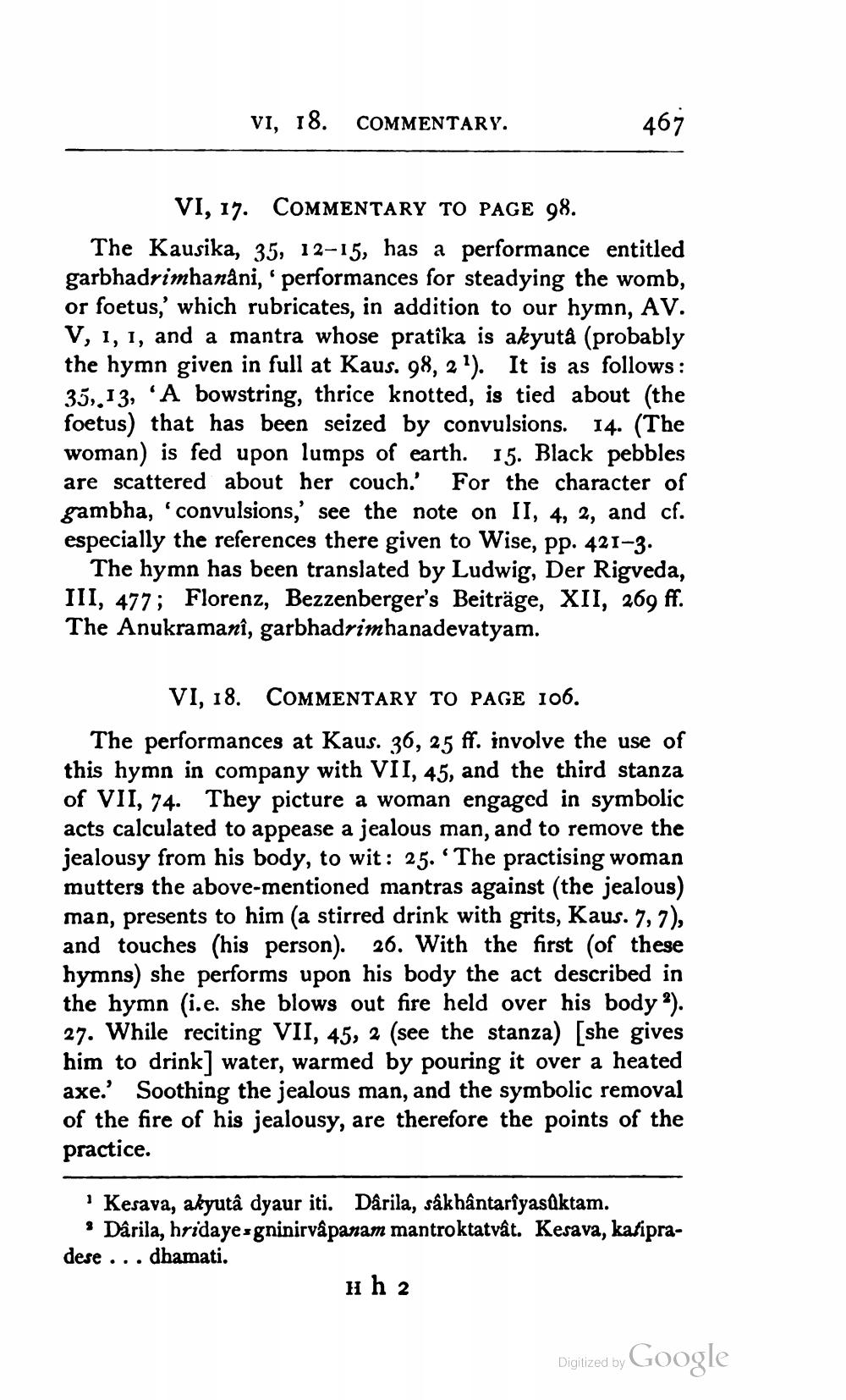________________
VI, 18. COMMENTARY.
VI, 17. COMMENTARY TO PAGE 98. The Kausika, 35, 12-15, has a performance entitled garbhadrimhanâni, performances for steadying the womb, or foetus,' which rubricates, in addition to our hymn, AV. V, 1, 1, and a mantra whose pratika is akyutå (probably the hymn given in full at Kaus. 98, 2). It is as follows: 35, 13, 'A bowstring, thrice knotted, is tied about (the foetus) that has been seized by convulsions. 14. (The woman) is fed upon lumps of earth. 15. Black pebbles are scattered about her couch. For the character of gambha, 'convulsions,' see the note on II, 4, 2, and cf. especially the references there given to Wise, pp. 421-3.
The hymn has been translated by Ludwig, Der Rigveda, III, 477; Florenz, Bezzenberger's Beiträge, XII, 269 ff. The Anukramanî, garbhadrimhanadevatyam.
VI, 18. COMMENTARY TO PAGE 106. The performances at Kaus. 36, 25 ff. involve the use of this hymn in company with VII, 45, and the third stanza of VII, 74. They picture a woman engaged in symbolic acts calculated to appease a jealous man, and to remove the jealousy from his body, to wit: 25. ‘The practising woman mutters the above-mentioned mantras against (the jealous) man, presents to him (a stirred drink with grits, Kaus. 7,7), and touches (his person). 26. With the first (of these hymns) she performs upon his body the act described in the hymn (i.e. she blows out fire held over his body ?). 27. While reciting VII, 45, 2 (see the stanza) [she gives him to drink] water, warmed by pouring it over a heated axe.' Soothing the jealous man, and the symbolic removal of the fire of his jealousy, are therefore the points of the practice.
Kesava, akyutâ dyaur iti. Darila, såkhântarîyasūktam. • Dârila, hridayesgninirvâpanam mantroktatvät. Kesava, kafipradese ... dhamati.
Hh 2
Digiized by Google




